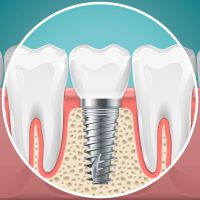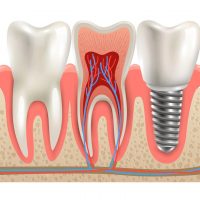What is a dental filling? How long do dental fillings last? Remember, the best approach to dental health is preventative care, which includes regular check-ups, proper oral hygiene practice at home, and a healthy diet. Tooth decay, if left untreated, can penetrate the tooth enamel and create cavities. Fillings for teeth halt this process by filling the cavities and sealing off spaces where bacteria can enter. This prevents further decay and safeguards the integrity of the tooth.
What is the lifespan of a dental filling?
How long does a filling last? The lifespan of a dental filling can depend on various factors such as the type of material used for the filling, the size and location of the filling, oral hygiene practice, dietary habits, and individual factors such as teeth grinding.
Here is an average lifespan for different types of dental fillings, for you to understand how long teeth fillings last. The tooth filling cost depends on these parameters as well.
Amalgam Fillings: Amalgam, or silver fillings, are durable and are usually used for filling molar teeth. They can last for about 10-15 years or longer with good oral hygiene.
Composite Resin Fillings: These are tooth-colored fillings that blend in with the natural color of teeth. While they are cosmetically pleasing, they don’t typically last as long as amalgam fillings, often needing replacement or repair after about 5 to 7 years. However, advancements in dental technology may prolong the lifespan of composite fillings.
Gold Fillings: Gold fillings (inlays and onlays) are durable and can last for 15 to 20 years or longer. They are less common due to their high cost and multiple dental visits are required for placement.
Ceramic Fillings: Ceramic dental fillings, often made of porcelain, are resistant to staining and abrasion and can last 15 years or longer.
Glass Ionomer Fillings: These are often used for children or non-load-bearing teeth. They have a shorter lifespan of about 5 years or less.
How long do cavity fillings last? Remember, maintaining good oral hygiene and regular dental check-ups will help extend the life of a dental filling. Also, always consult with a dentist for personalized advice and ask how long a filling should last.
What factors can influence the longevity of a dental filling?
Several factors can influence how long fillings last in teeth, including:
- Material Used: The type of material used for the filling significantly affects its lifespan. Amalgam and gold fillings tend to last longer than composite resin and glass ionomer fillings.
- Size and Location of Fillings: Larger fillings and those on chewing surfaces may not last as long due to the increased pressure they endure.
- Oral Hygiene: Regular brushing, flossing, and dental check-ups can help maintain the integrity of a cavity filling. Poor oral hygiene can lead to further decay around the filling, shortening its lifespan.
- Dietary Habits: A diet high in sugar and acidic foods and beverages can contribute to tooth decay, which could potentially affect the filling and surrounding tooth structure.
- Bruxism (Teeth Grinding): People who grind or clench their teeth may wear down fillings faster, especially those made from softer materials like composite resin.
- Dental Techniques: The skill of the dentist and the technique used when placing the filling can also impact its lifespan. An improperly placed filling can lead to decay under or around the filling.
- Personal Habits: Certain habits such as using teeth to open packages or biting on hard objects can damage fillings.
- Overall Health: Certain medical conditions, such as dry mouth or autoimmune diseases, can affect oral health and the longevity of dental fillings.
Can you explain the process of getting a tooth filler and how it affects its durability?
Absolutely, getting a dental filling involves several steps, and the care taken during each step can significantly influence the durability of the filling:
Local Anesthesia: The dentist usually begins by administering a local anesthetic to numb the area around the tooth, minimizing any discomfort during the procedure.
Removal of Decay: Then, the dentist uses a drill, air abrasion instrument to remove the decayed portion of the tooth.
Cleaning the Cavity: After all decay has been removed, the dentist will prepare the space for the filling by cleaning the cavity of bacteria and debris. If the decay is near the root, your dentist may first put in a liner made of glass ionomer, composite resin, or other material to protect the nerve.
Placing a dental filler: Once the cavity is cleaned, the dentist will fill it with the chosen filling. If the dentist uses a bonding technique with the filling material (common with composite resins), they will etch (prepare) the tooth with an acid gel before placing the filling. The filling is then hardened by applying an intense light.
Polishing: After the filling is placed, the dentist finishes and polishes it. The cost of a dental filling depends on these aspects.
Remember, every dental situation is unique, and your dentist is the best person to provide advice tailored to your specific circumstances.
What are the signs that indicate a dental filling may need to be replaced or repaired?
There are several signs that may indicate that a dental filling needs to be replaced or repaired:
- Tooth Pain or Sensitivity: This could be a dull ache or a sharp pain when you bite down or consume hot, cold, sweet, or acidic foods and beverages. Pain may indicate a filling is cracked, has a gap around it (caused by wear and tear), or there’s decay under the filling.
- Taste of Metal or Change in Taste: An amalgam (silver) filling that’s deteriorating may cause a metallic taste in your mouth. A change in taste could also indicate a cracked filling.
- Visible Wear or Damage: Dental fillings, especially those in your front teeth, can chip or crack, or show signs of wear. If the damage is extensive, the filling may need to be replaced.
- Discoloration or Dark Spots: Over time, a filling may become stained and discolored. A dark spot could also indicate decay under or around the filling.
- Floss Shreds or Tears: If your floss consistently shreds or tears when you floss a particular tooth, it might be due to a rough or sharp edge on a filling.
- Changes in Bite: If you notice that your bite feels “off” or uncomfortable, it could be due to a worn down or broken filling.
- Food Gets Stuck: If food consistently gets stuck in a certain area, it could be due to a gap between the dental filling and the tooth.
- Swollen Gums: Swelling or a “pimple” on the gums near a filled tooth could indicate an infection or abscess, which can develop if decay beneath a filling goes untreated.
Can a dental filling be redone if it becomes damaged or worn out?
Yes, a dental filling can indeed be replaced if it becomes damaged or worn out.
Over time, teeth fillings can wear down, chip, or crack due to the pressure from chewing and biting, exposure to extreme temperature from foods and drinks, and possible teeth grinding. If a filling becomes loose or falls out, bacteria can sneak underneath the filling and cause more decay, which could lead to additional tooth damage.
If your dentist determines that a dental filling is damaged or worn out, they will remove the old filling, clean the cavity to remove decay, and then place a new filling. This process is similar to how the original filling was placed.
However, if the tooth’s structure is too damaged or if there’s a large amount of decay, a filling might not be enough. In these cases, your dentist might recommend a dental crown, root canal, or even an extraction, depending on the severity of the decay or damage.
It’s always best to maintain regular dental checkups. Your dentist can monitor the condition of your fillings and catch any problems early before they require more extensive procedures.
Can a dental filling fall out, and what should you do if that happens?
Yes, it is possible for a dental filling to fall out. This can happen due to various reasons like the filling becoming loose over time due to wear and tear, a strong bite force or trauma, further decay under the filling, or because of issues during the filling process such as inadequate bonding.
During the appointment, your dentist will examine the tooth, decide on the best course of action, and may replace the filling or suggest another treatment if the tooth has further decay or damage. In more severe cases, a root canal or a crown might be necessary. Always remember that prompt attention to such issues will help preserve your oral health.










